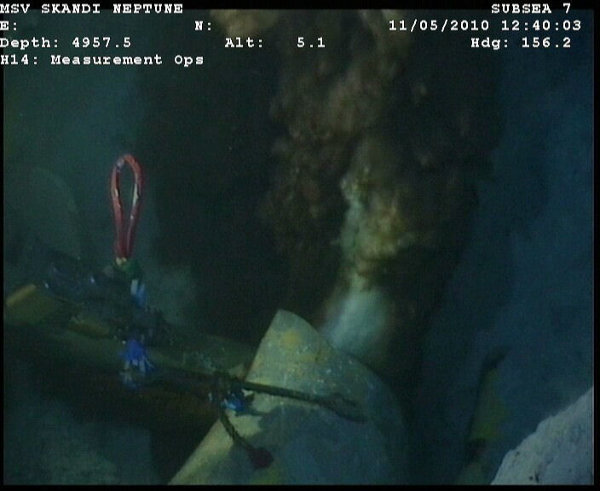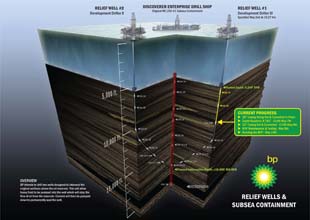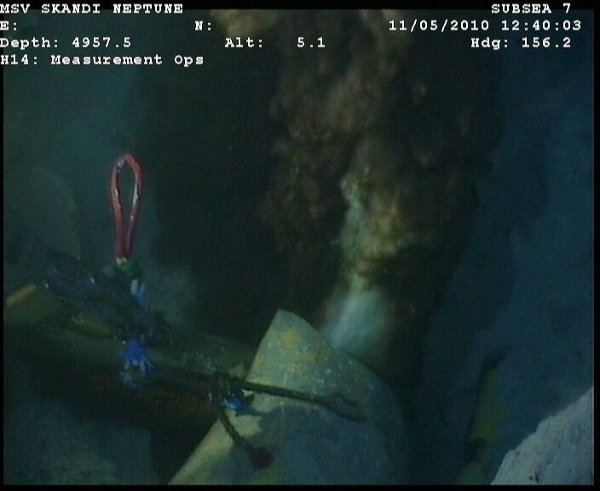
Photo courtsey BP. Front page image: Flickr/<a href="http://www.flickr.com/photos/deepwaterhorizonresponse/4596341602/">Deepwater Horizon Response</a>.
BP is still using spill estimates that outside experts believe grossly underestimate the size of the disaster in the Gulf of Mexico. Instead of the 5,000 barrel figure BP has given, they believe the spill rate may be closer to 95,000 barrels, or 4 million gallons, every day. The Obama administration has so far echoed those figures, though they’ve now organized a task force to get an official government estimate.
But the watchdogs at Citizens for Responsibility and Ethics in Washington (CREW) and Greenpeace think the government already knows more than it’s letting on about the size of the spill. Both the White House and agencies have had access to the live video feeds of the spill site for some time, while the video was only made available to the public and the press today. On Thursday, the groups sent Freedom of Information Act requests to the U.S. Coast Guard, Environmental Protection Agency, Department of the Interior, and the National Oceanic and Atmospheric Administration soliciting all the video, documents, and other records related to the spill and the use of dispersant chemicals.
“We’d like to know what they really know,” CREW executive director Melanie Sloan told Mother Jones. “We want to know if what government officials are saying is the same thing that they have had sitting on their desks.”
Obama’s top science adviser, John Holdren, said last week, “We really do not know if it is 5,000 barrels (of crude oil) a day, or 10,000, or 2,000.” But Damon Moglen, global warming campaign director at Greenpeace, says that there’s no way the government is in the dark about how much is actually spilling. “Why, between BP and the government, don’t we have a serious, reasonable or realistic assessment of how big the spill is?” said Moglen. “What’s going on down there is much more serious than what BP is telling us and what the government is telling us.”
“We can’t pretend this away by underestimating the numbers on what’s going on down there,” Moglen continued. The groups have asked for the FOIA requests to be met on an expedited basis, in the next 10 days.
The live feed of the blowout site was made available today, a month into the spill and after weeks of lobbying by members of Congress and the press. The live feed is now running on the websites of Sen. Bill Nelson (D-Fla.), the House Energy and Commerce, and the Select Committee for Energy Independence and Global Warming.














